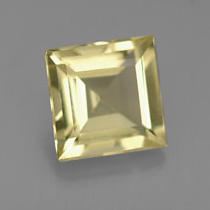The Gemstone Beryl

Beryl is a single mineral with many varieties that are distinguished by their color. Few other minerals have so many known varieties specifically identified by their color. Many of the Beryl varieties are very important gemstones. In fact, all the transparent varieties of Beryl have been used as gemstones, although Emerald and Aquamarine are by far the most important and well-known varieties.
Color
?
White, Colorless, Blue, Red, Green, Yellow, Orange, Brown, Pink, Purple
Chemical Formula
?
Be
3Al
2Si
6O
18
All About
Pure Beryl is colorless; traces of different
impurities are responsible
for the color diversity and varieties. The list below describes each color variety, and most have a link for more specific gemstone information for that variety:
- Emerald, the green variety, is the most
popular green gemstone and is one of the most valuable gems.
- Aquamarine, the blue to blue-green variety, is the most popular light-blue gemstone.
- Morganite,
the pink to light-purple variety, named after the banker J.P. Morgan.
- Heliodor is yellow to greenish-yellow variety. It can also include light green, orange, and brown Beryl.
- Golden Beryl has a golden yellow to orange-yellow color. The terms Heliodor and Golden Beryl are
often interchangeable.
- Goshenite is the white to colorless variety of Beryl.
- Red Beryl, also known as Bixbite, is a rare, deep red variety found only two localities in Utah.
- Pezzottaite, also known as Raspberry Beryl, is a newly identified gemstone that was originally thought to be Beryl but has been scientifically distinguished as a separate mineral species. It occurs in a raspberry-red color, and its physical properties are almost identical to Beryl.
Uses
?
All Beryl varieties are
faceted into various gem cuts, especially
Emerald and
Aquamarine, which are one of the most popular jewelry gemstones.
Treatments & Enhancements
?
Aquamarine and
Morganite are often
heat treated to intensify their colors, and
Emeralds are commonly
oiled to hide flaws. The other forms of Beryl are usually not treated or enhanced.
Beryl Sources
?
See the individual Beryl gemstones for sources.
Similar Gemstones
?
See the individual Beryl gemstones for similar gemstones.
Beryl Photos
?
The images below depict each gem variety of Beryl. (We are lacking a good image of Red Beryl.) See the individual variety pages for more photos.
Beryl in the Rough Photos
?
The images below depict each gem variety of Beryl in the rough. See the individual variety pages for more photos.